How reman valve bodies are evolving
For most of the past half century, the rebuilding of the valve body has been the skill set that separates master transmission builders from those with less experience. It follows that, much like a torque converter, purchasing a factory remanufactured valve body as a sub assembly has become more and more common. It’s not only
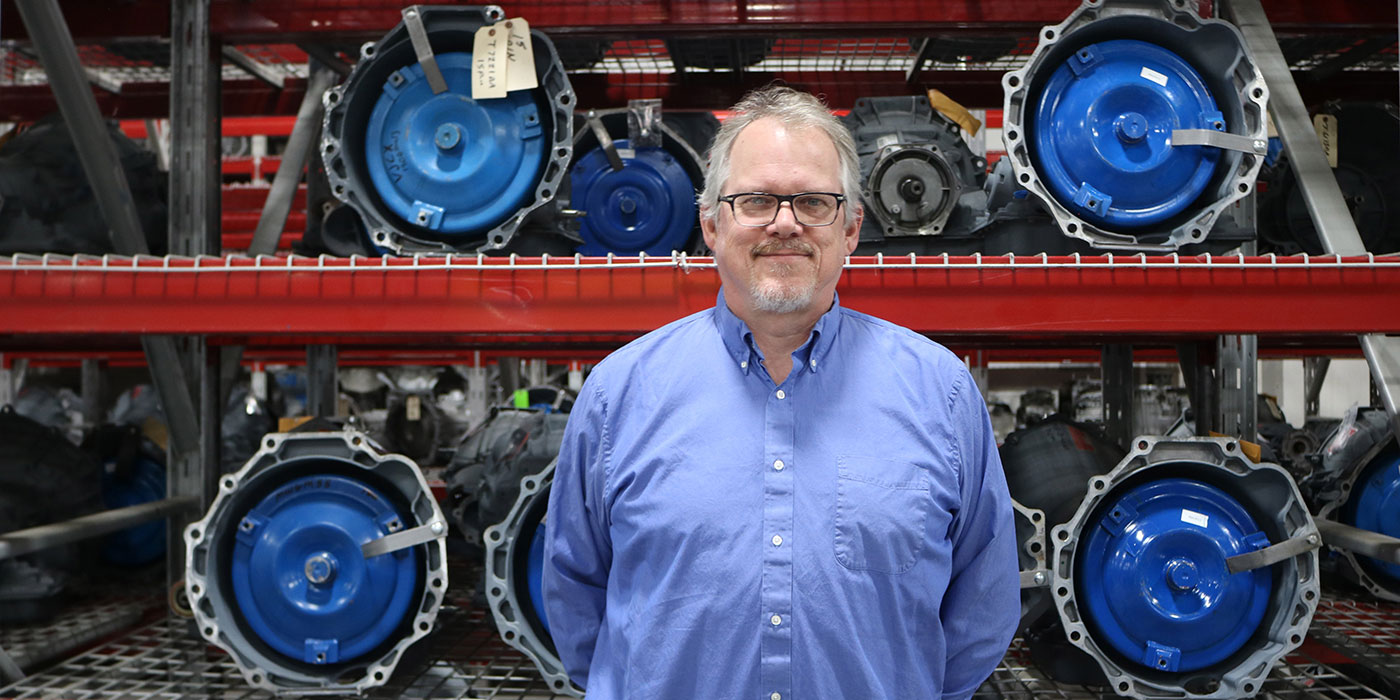
Direct Clutch Drum & Shaft Kit
Sonnax’s new direct clutch drum ad shaft kit for AODE/4R70W transmissions.
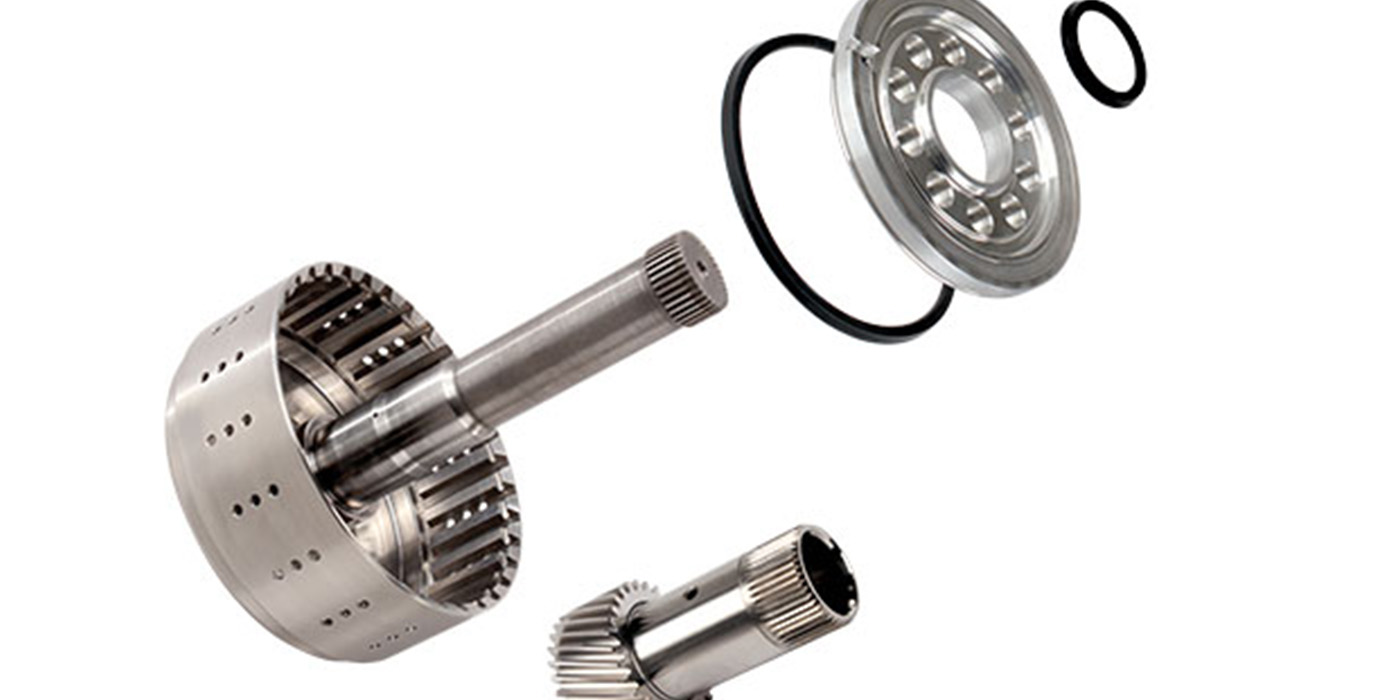
An Inexpensive Fix for the 4R70W
The bearing that is being used in this updated carrier is exactly like the one Ford uses in their 5R110W transmission for the front planetary. If your shop can lay hands on extra captured needle bearings, the fix is easy. Knock out two small pinion gears and you gain easy access to the bearing for replacement.
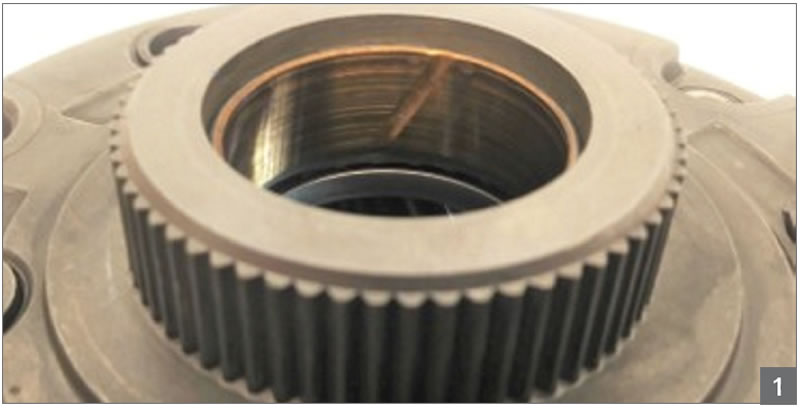
Hot Head
A 2000 Mercury Grand Marquis with a 4.6L engine using a 4R70W transmission is at a general-repair shop for weeks. The problem is an intermittent engine surge on top of the 1-2 shift when hot. The perception is an engine problem. Eventually, the idea of the converter clutch coming on was being considered. Without much testing, the valve body and solenoids were replaced yet the problem persisted.
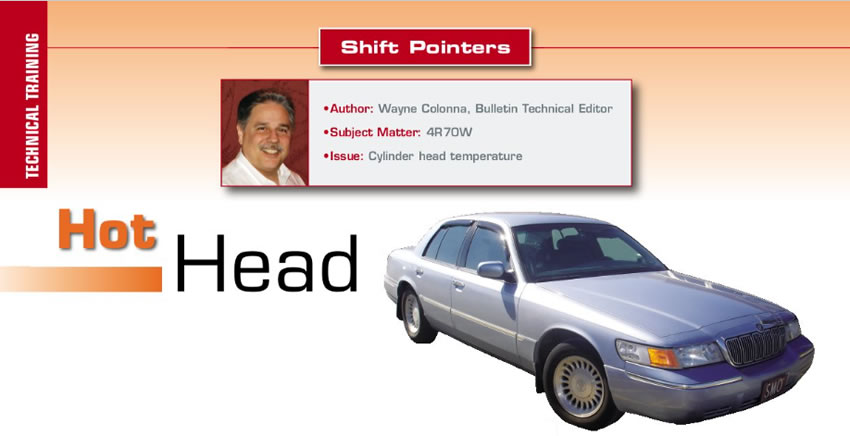
Critical Wear Areas & Vacuum Test Locations
Critical Wear Areas & Vacuum Test Locations

Old Guy, Old Problem; Young Guy, Old Problem
Thus is the case with the 2000 Crown Vic that showed up at one of our installers. With the car having 190,000 hard miles and needing an exchange unit installed, the Young Guy (technician) quickly pulled the unit and dropped in a fresh 4R70W reman. It all went smoothly until the test drive.
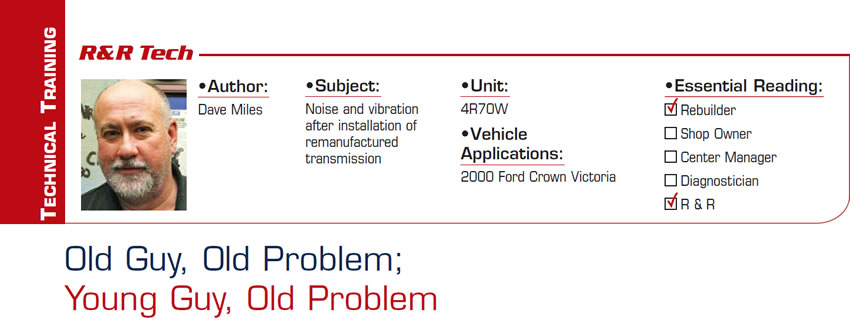
A Fly on the Wall
When transmission parts fail or have problems, I often think about the decisions made along the way that resulted in the problematic part being used in production. A common sight at many transmission benches these days is a “cracked” separator plate found in 2001 and newer 4R70W/4R75E units. There is more to this story than just the cracked plates discovered during the rebuild, and it started long ago when the decision was made to eliminate a valve-body stiffener plate. I would love to have been a fly on the wall back then, listening to the reasons why it was OK to eliminate the stiffener plate.
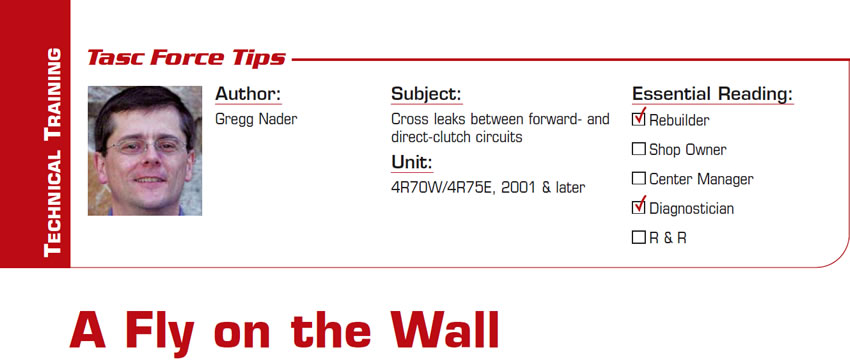
It’s not just the Transmission
Recently a customer called to get a quote for a 1998 Ford F-150 4X4 with the 4.6-liter V-8 engine and 4R70W transmission. The price was given and we had one in stock. A couple of days later they called and told us they needed the transmission. It was still in stock, but it was late in the day so we made arrangements to deliver it to them the next day.
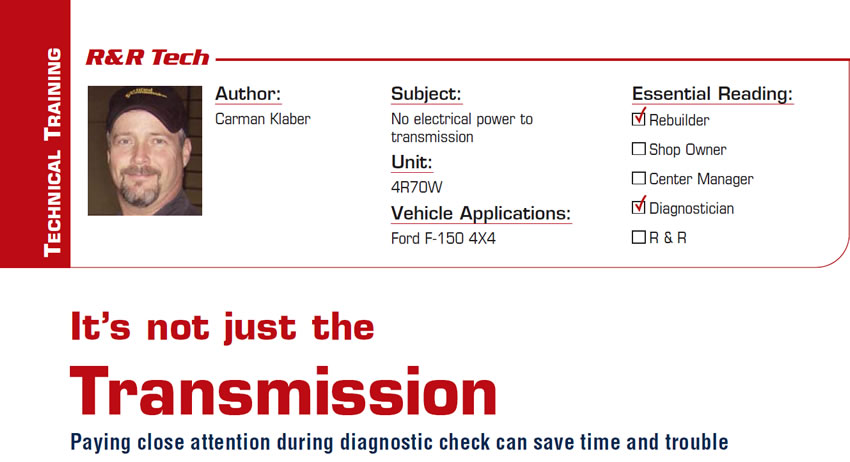
‘Petites Pièces, Gros Problèmes’ (little pieces, big problems)
The story goes something like this: The customer came in to the shop complaining of no overdrive in a 4R70W. There are no codes or obvious external causes, but the complaint is verified on the road test. The unit will not go into overdrive.

I Lost My EPC!
The AODE/4R70W transmission has a problem with wear in the pressure-regulator-valve bore that can cause a reduction or complete loss of EPC pressure when the unit is hot. This equates to no or minimal line rise, causing the transmission to have medium- to full-throttle slipping in gear and sliding shifts.
Once a pressure gauge has revealed that EPC pressure remains near 0 at any throttle opening (as well as when the transmission is unplugged), the technician usually replaces the EPC solenoid, yet the problem remains.
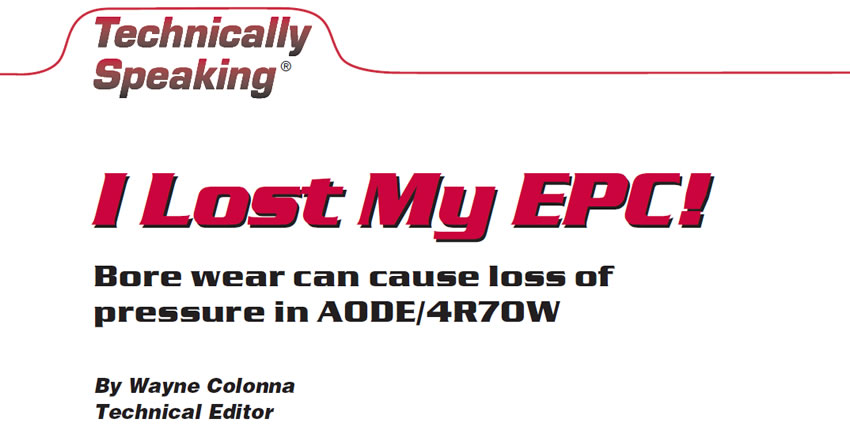
Another Fantastic Ford Fable
A 1997 Ford E 250 van equipped with a 4.2-liter engine and a 4R70W transmission comes into the shop with a complaint of falling out of fourth gear into third at highway speeds. In local traffic, however, the transmission acts like a C6 with a stuck governor; it remains in second gear as you come to a stop and “dunks” down into first gear.

Replaced the What?
Sometimes a problem with a vehicle requires quite a bit of diagnostic head scratching, at the end of which you finally find what is causing the problem.

